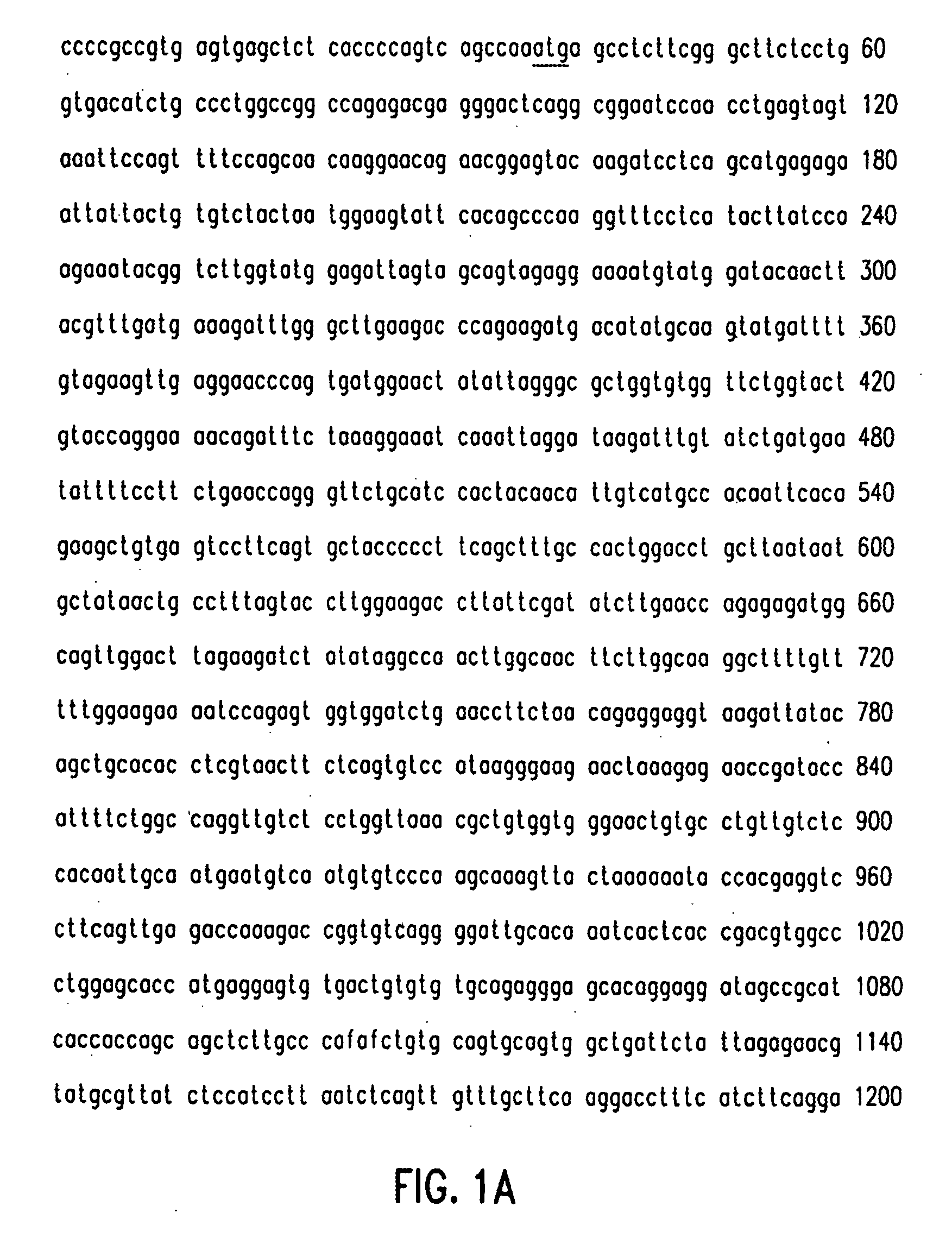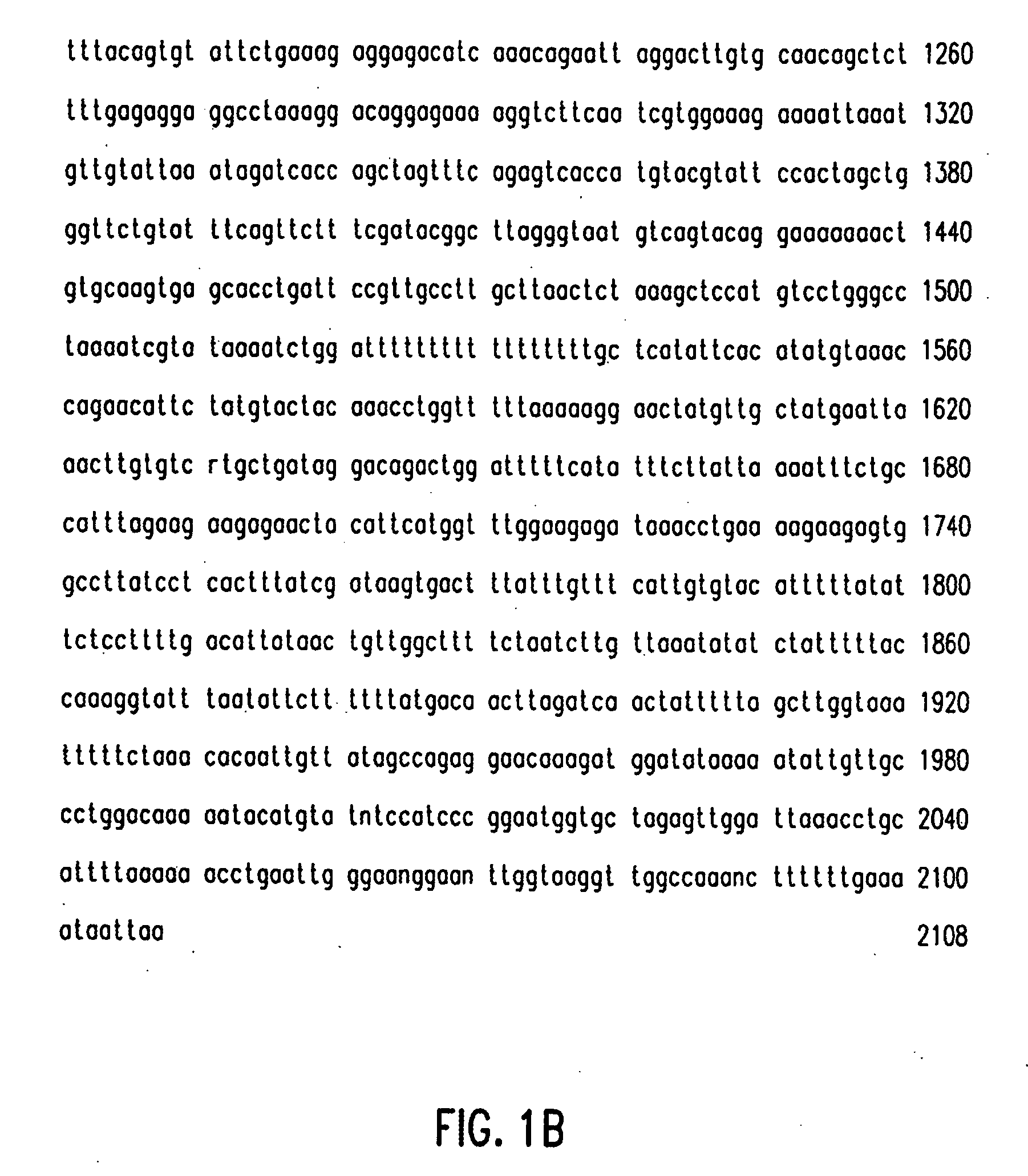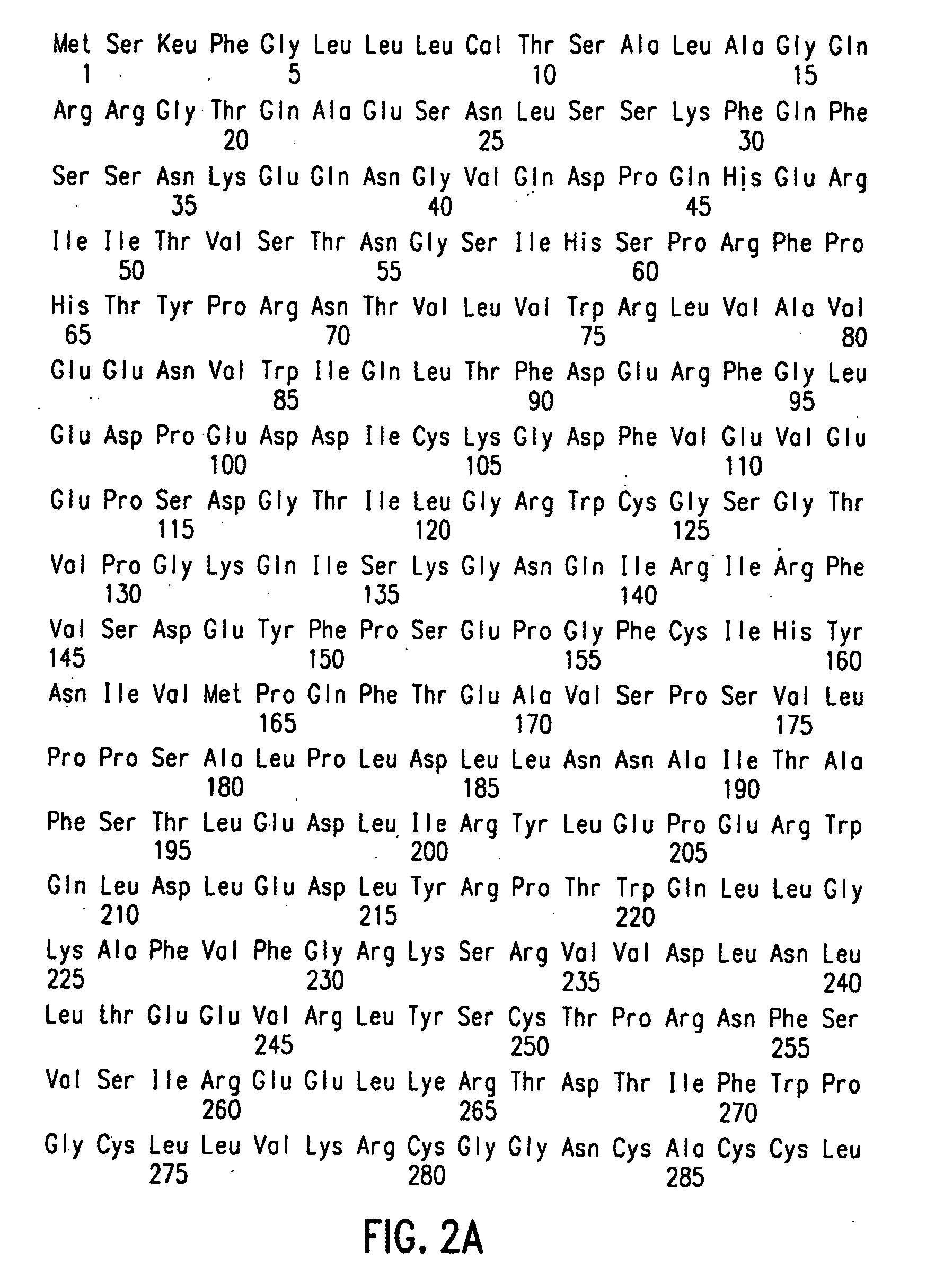Composition and method for modulating vasculogenesis for angiogenesis
a vasculogenesis and vasculogenesis technology, applied in the direction of growth factors/regulators, animal/human proteins, radiation therapy, etc., can solve the problems of unfunctional capillaries and single cell type unitary activity, and achieve more physiological functional properties and restricted activity
- Summary
- Abstract
- Description
- Claims
- Application Information
AI Technical Summary
Benefits of technology
Problems solved by technology
Method used
Image
Examples
example 1
Generation of Specific Antipeptide Antibodies to Human PDGF-C
[0166] Two synthetic peptides were generated and then used to raise antibodies against human PDGF-C. The first synthetic peptide corresponds to residues 29-48 of the N-terminus of full length PDGF-C and includes an extra cysteine residue at the N- and C-terminus: CKFQFSSNKEQNGVQDPQHERC (SEQ ID NO:31). The second synthetic peptide corresponds to residues 230-250 of the internal region of full length PDGF-C and includes an extra cysteine residue at the C-terminus: GRKSRVVDLNLLTEEVRLYSC (SEQ ID NO:32). The two peptides were each conjugated to the carrier protein keyhole limpet hemocyanin (KLH, Calbiochem) using N-succinimidyl 3-(2-pyridyldithio)propionate (SPDP) (Pharmacia Inc.) according to the instructions of the supplier. 200-300 micrograms of the conjugates in phosphate buffered saline (PBS) were separately emulsified in Freunds Complete Adjuvant and injected subcutaneously at multiple sites in rabbits. The rabbits were ...
example 2
Expression of Full Length Human PDGF-C in Mammalian Cells
[0167] The full length cDNA encoding human PDGF-C was cloned into the mammalian expression vector, pSG5 (Stratagene, La Jolla, Calif.) that has the SV40 promoter. COS-1 cells were transfected with this construct and in separate transfections, with a pSG5 vector without the cDNA insert for a control, using the DEAE-dextran procedure. Serum free medium was added to the transfected COS-1 cells 24 hours after the transfections and aliquots containing the secreted proteins were collected for a 24 hour period after the addition of the medium. These aliquots were subjected to precipitation using ice cold 10% trichloroacetic acid for 30 minutes, and the precipitates were washed with acetone. The precipitated proteins were dissolved in SDS loading buffer under reducing conditions and separated on a SDS-PAGE gel using standard procedures. The separated proteins were electrotransferred onto Hybond filter and immunoblotted using a rabbit...
example 4
Receptor Binding Properties of Full Length and Truncated PDGF-C
[0175] To assess the interactions between full length and truncated PDGF-C and the VEGF receptors, full length and truncated PDGF-C were tested for their capacity to bind to soluble Ig-fusion proteins containing the extracellular domains of human VEGFR-1, VEGFR-2 and VEGFR-3 (Olofsson et al., Proc. Natl. Acad. Sci. USA, 1998 95:11709-11714). The fusion proteins, designated VEGFR-1-Ig, VEGFR-2-Ig and VEGFR-3-Ig, were transiently expressed in human 293 EBNA cells. All Ig fusion proteins were human VEGFRs. Cells were incubated for 24 hours after transfection, washed with Dulbecco's Modified Eagle Medium (DMEM) containing 0.2% bovine serum albumin and starved for 24 hours. The fusion proteins were then precipitated from the clarified conditioned medium using protein A-Sepharose beads (Pharmacia). The beads were combined with 100 microliters of 10× binding buffer (5% bovine serum albumin, 0.2% Tween 20 and 10 □g / ml heparin) ...
PUM
| Property | Measurement | Unit |
|---|---|---|
| pH | aaaaa | aaaaa |
| concentrations | aaaaa | aaaaa |
| temperature | aaaaa | aaaaa |
Abstract
Description
Claims
Application Information
 Login to View More
Login to View More - R&D
- Intellectual Property
- Life Sciences
- Materials
- Tech Scout
- Unparalleled Data Quality
- Higher Quality Content
- 60% Fewer Hallucinations
Browse by: Latest US Patents, China's latest patents, Technical Efficacy Thesaurus, Application Domain, Technology Topic, Popular Technical Reports.
© 2025 PatSnap. All rights reserved.Legal|Privacy policy|Modern Slavery Act Transparency Statement|Sitemap|About US| Contact US: help@patsnap.com



